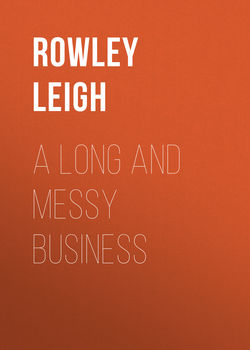Читать книгу A Long and Messy Business - Rowley Leigh - Страница 44
На сайте Литреса книга снята с продажи.
ОглавлениеThe Lighthouse
Daube de Boeuf
Virginia Woolf may have been a gourmet but she was no
cook. The famous passage in To the Lighthouse describing
the daube of beef is, quite simply, full of howlers.
‘Everything depended upon things being served up to
the precise moment they were ready. The beef, the bay
leaf, and the wine – all must be done to a turn. To keep it
waiting was out of the question,’ she asserted. How a bay
leaf can be ‘done to a turn’ is a conundrum at best: it is
there to give its aroma and to be eventually discarded. The
beef, and the wine for that matter, are cooked for a very
long time and the notion that any precision is required is
somewhat erroneous. One of the many good things about
a daube of beef is that it will wait around for a long time
without coming to any harm whatsoever.
Of course, Mrs Woolf did not pretend to be a cook, any
more than did Mrs Ramsay in the novel. In those days, the
cook did the cooking and the hostess took the credit. ‘It is
a French recipe of my grandmother’s,’ she declares, as
though possession of the recipe were grounds enough for
the garnering of praise. The actual cook was Marte, Mrs
Ramsay’s maid, and it is probable that the mysteries of
the daube were very much her family heirloom rather
than that of her mistress. The curious thing is that these
mysteries have largely been forgotten today. What we call
a daube is rarely anything of the sort.
When investigating the daube, I resolved to make it
exactly as most old recipes prescribe but as cooks never
now do. Although To the Lighthouse is vague on the
subject, the suggestion that Marte spent three days
making the dish suggests a modern style of daube.
Briefly put, this means that the meat was marinated with
vegetables and red wine, then subsequently removed from
its marinade, dried and browned before being reunited and
slowly braised and then, in all probability, separated again
from this entourage and embellished with fresh
ingredients – lardons, onions, mushrooms, olives and the
like – before being served. C’est magnifique mais ce n’est
pas la daube. This elaborate production is much more akin
to a boeuf bourguignon than a daube. The real thing is
simple and yet far superior and even Mrs Ramsay might
have been up to the work had she been able to locate her
pinafore. Whether Mrs Woolf could have managed is
perhaps more open to question.
67
February
